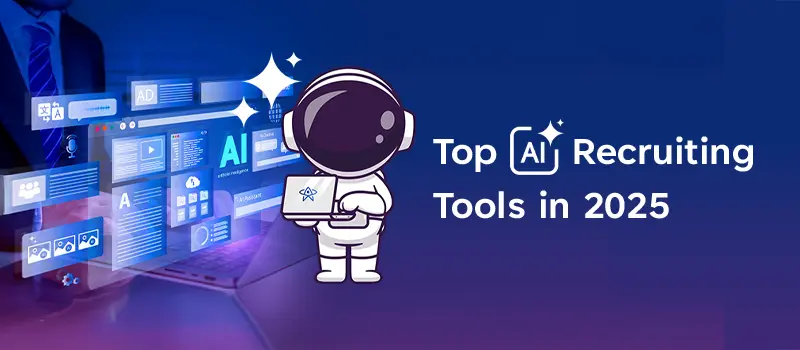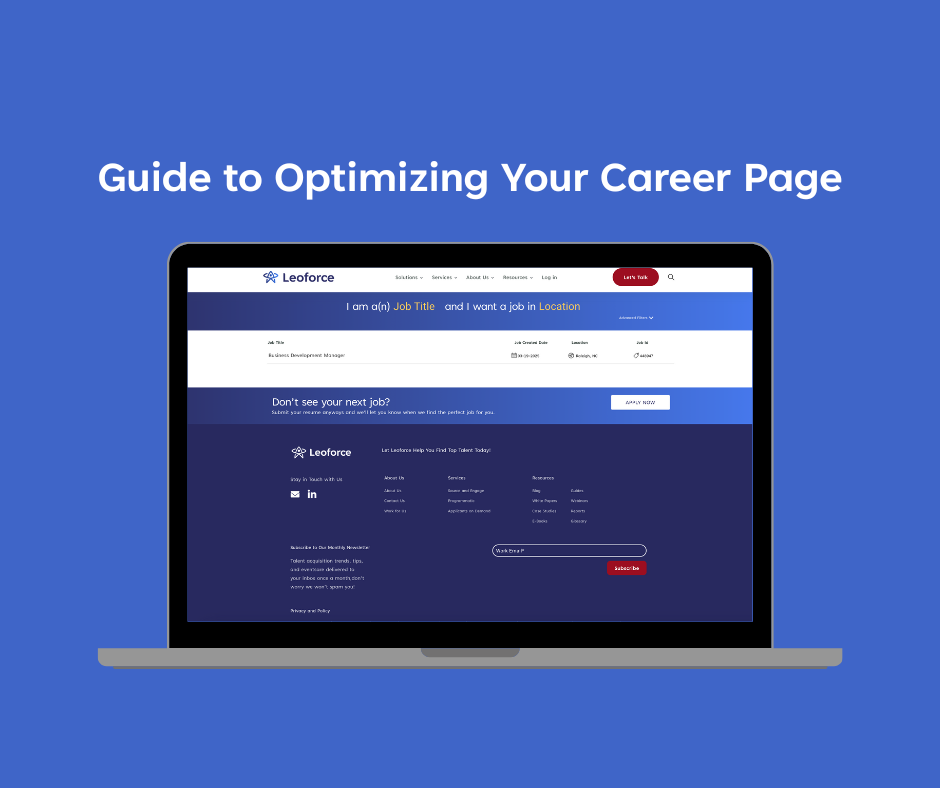Direct Sourcing in Recruiting: Insights from the Webinar

To meet the unprecedented workforce challenges faced by businesses today, many organizations are turning to Direct Sourcing to build a more agile, cost-effective, and scalable workforce. Although Direct Sourcing has historically been viewed as contingent workforce solution, it has now become widely accepted as an integral part of the mainstream talent acquisition and recruiting strategies of businesses of all sizes, as well as enterprise organizations.
There are several factors driving the increasing popularity of Direct Sourcing in the recruiting ecosystem:
- The need for emerging or specialized skill sets
- Excessive costs from third-party staffing models
- Rising demand for improved diversity hiring
- Need for faster hiring and program agility
- Increasing desire for flexible talent pools
These are just a few of the reasons Direct Sourcing is growing as a hiring tool across the industry spectrum. During our June 14th webinar, our panel of industry experts tackled these questions and discussed why Direct Sourcing is important, what it seeks to accomplish, how to leverage the right AI recruiting tool to achieve your Direct Sourcing goals, and so much more.
Our Panelists
Taylor Ramchandani, Vice-President of Strategy, VectorVMS
With over 7 years of experience in the contingent workforce technology space, Taylor helps her teams build technology that helps clients manage their extended or contract workforce by making it easier to source and manage non-employee labor. She has extensive experience working with direct sourcing technologies and works with clients to add additional ways to source talent by incorporating a direct sourcing recruiting model into their talent acquisition strategy.
Bret Coin, Former SVP, TA, Okta
Bret is an industry leader with more than 25 years of software technology and talent acquisition experience working with notable companies including SAP, Intuit, and Cisco. His background also includes serving as Head of People for a fast-growing, public start-up, as well as founding and growing a successful RPO business focused on small to mid-sized tech firms.
Kelly Crissy Clark, Account Director, Bullhorn
Kelly recently joined Bullhorn with an extensive background in HR tech and talent acquisition. Her professional career includes serving in sales, operations, and account management leadership roles, with notable staffing firms such as Adecco, and Sunbelt Staffing. Kelly leverages her in-depth knowledge of the staffing industry with a passion for driving success through strategic process improvement to deliver exceptional solutions to a variety of HR challenges.
Wade Pierson, Chief Revenue Officer, Leoforce
As CRO, Wade provides comprehensive oversight and leadership for the Partnerships, Sales, Marketing, and Client Success teams at Leoforce. His background encompasses 20+ years of diverse experience across the talent acquisition industry spectrum, and includes broad, global expertise in the SaaS and talent acquisition technology space.
Deconstructing Direct Sourcing 2023
Moderator Taylor, Ramchandani began the webinar discussing what a Direct Sourcing recruiting model can do for your business when it’s done well. Referencing a study from LiveHire of 15,000 contingent hires, Taylor spoke to the benefits of proactive talent pooling via Direct Sourcing and shared the following statistics:
- 41% fewer applications to process per hire
- 24% improvement in submittal-to-hire ratios
- 30% reduction in shortlisted candidates withdrawing per hire
- 31% less time to submit
While the benefits of implementing a Direct Sourcing recruiting model are tangible, it does seem there are perceived challenges to adoption. When asked what their main challenges or limitations are to implementing Direct Sourcing, webinar participants responded with:
- 57% – limited access to niche or specialized talent pools
- 23% – higher initial investment in technology and tools
- 57% – Time-consuming sourcing and screening processes
- 20% – Internal resistance or lack of buy-in from stakeholders
- 17% – Adoption by the recruiting teams
- 31% – The process can be unpredictable
The panelists went on to discuss what Direct Sourcing in recruiting means to them individually, with Taylor offering this response:
“For me personally, coming from a contingent perspective, when I think about direct sourcing, I think about it as candidates self-selecting to be considered for different roles. So, when we look at Direct Sourcing at VectorVMS, we look at it as adding an additional sourcing channel beyond traditional sourcing. You’re sending your job through a system to your suppliers, but also putting them where candidates are looking for open positions on job boards, career sites, opening up that additional channel where talent can self-select or self-identify into your talent pools as well as your contingent positions.”
Wade views Direct Sourcing as a proactive strategy versus a reactive strategy
“To me it’s really a proactive strategy versus a reactive strategy. You’re reaching out to passive group of people in a variety forms and engaging them and creating a high-level understanding for them of the culture of your company, the nature of the roles, what you’re trying to accomplish, and how you’re trying to do it. It’s a proactive versus reactive strategy to identify, engage, and build ongoing relationships with candidates.”
In a proactive Direct Sourcing model, companies are building a curated talent pool of candidate resources that can be used over and over again.
Kelly emphasizes the connection between Direct Sourcing and employer branding
“It’s a creative, different approach to contingent staffing using a different method or style, and the difference being you’re really leveraging the brand name. After all, your marketing team has spent so much time and effort, and money building a brand name the company is proud of, so why not use it? I think it serves as a better reminder that the brand name is so important but it’s also using what all that time and energy you’ve already put into it to proactively reach out to candidates. It also makes candidates feel like they have more of a say in the types of jobs and the companies they want to work for, which has been a big trend we’ve been seeing for the past few years.”
Not only is leveraging your employer brand a key component to an effective Direct Sourcing program, it has the added benefit of increasing brand exposure and enhancing your brand reputation with candidates who are happy to spread the word about your organization being a great place to work.
“One of the things I like about the corporate space when it comes to direct sourcing is that you can have a team of direct sourcers on the full-time recruiting team to do that passive outreach, get that engagement and start to build talent pools. And then on the contingent side, as you scale your contingent workforce program, often you’re working with a managed service provider, or somebody who’s handling a lot of that work, and they’re putting your contingent roles out to search. When you start taking some of that search on yourself internally and direct sourcing candidates for contingent roles, as a leader, I like that because we can really get our costs down.
How does Direct Sourcing help keep costs down?
An effective Direct Sourcing program can definitely reduce costs associated with outsourcing your talent search to third-party vendors. But another way a successful Direct Sourcing program can decrease overall costs lies in the curation of your talent pool. A talent pool comprised of pre-vetted candidates who are already engaged with your company brand. The result is a robust pool of ready-to-work candidates with the power to decrease or even eliminate employee turnover – which can cost a company an average of 1.5 to 2 times an employee’s salary.
Is an AI-powered sourcing tool the key to a successful Direct Sourcing program?
All of our panelists agree that defining your goals and building an effective roadmap to launching a successful Direct Sourcing program starts with the right technology tool. But all AI-powered sourcing platforms are not created equally. If you’re ready to maximize ROI and capitalize on your own candidate resources, arm yourself with Leoforce – the award-winning, AI-powered sourcing tool with Talent Intelligence that scores and ranks talent for compatibility, simultaneously sourcing candidates from 70+ channels for 90% of jobs in 5 minutes or less, reducing candidate review and shortlisting time by 50%. Book your demo of Leoforce today and join the industry leading companies taking recruiting to the next level!
To watch the full webinar, click here!




